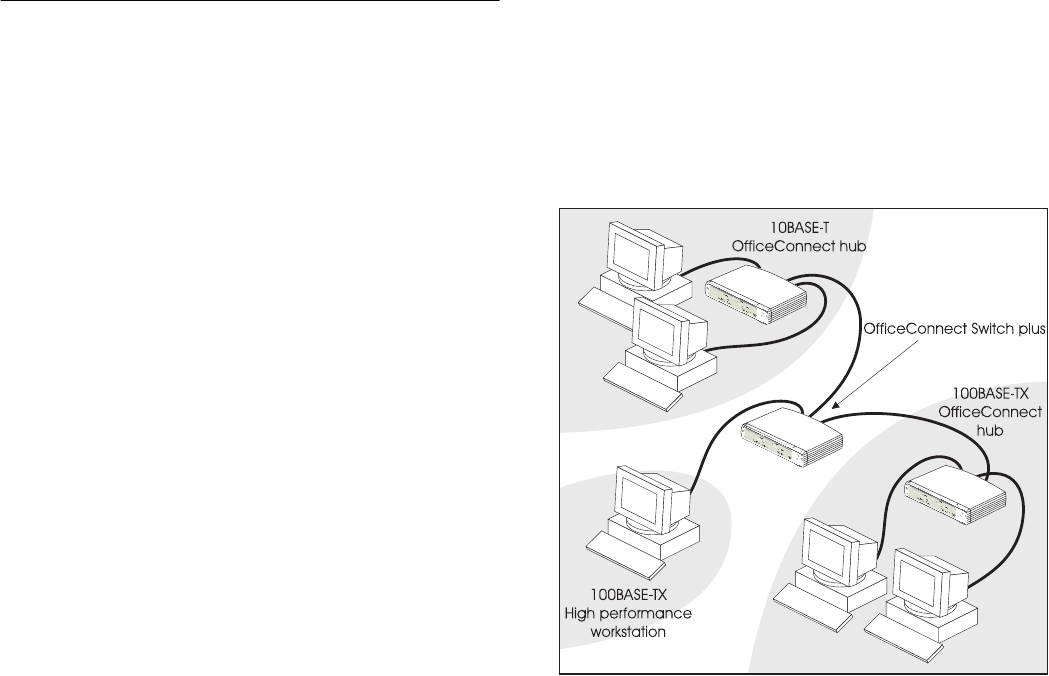
9
How the Switch Can Be Used
Switching
When a network of repeater hubs is in operation, any
information that is sent by the workstations is passed
around the whole network (regardless of the destination of
the information). This can result in a lot of unnecessary
traffic that can slow the network down. The Switch solves
this problem because it ‘listens’ to the network and
automatically learns what workstations can be reached
through its ports. It can then selectively pass on any
information by transmitting the traffic from the relevant port
only (instead of all ports like a repeater hub). This operation
is called ‘switching’.
The Switch effectively divides up your network, localizing
the network traffic and passing on traffic as necessary (as
shown in Figure 2). If you have workstations that
communicate frequently in the same part of the network,
traffic between them is not passed on unnecessarily to the
remainder of the network, thereby reducing the load. If you
have any high performance workstations that require a lot
of bandwidth, connect them directly to the Switch.
The Switches have a built in feature to aid network
performance at times of excessive load. It is called Priority
Queuing. When a packet is received, the Switch will
examine it to see if it has been priority encoded. If it has,
the Switch will then read the priority level and determine
whether it should be directed through the normal or high
priority channel. This feature can be useful, for example,
during excessive loads when one type of traffic may require
priority over another. The Switch is configured to to comply
with VLAN priority tagged frames and IP TOS / DSCP priority
encoded frames.
Figure 2 The Switch Separates Your Network and Controls the
Information Effectively


















